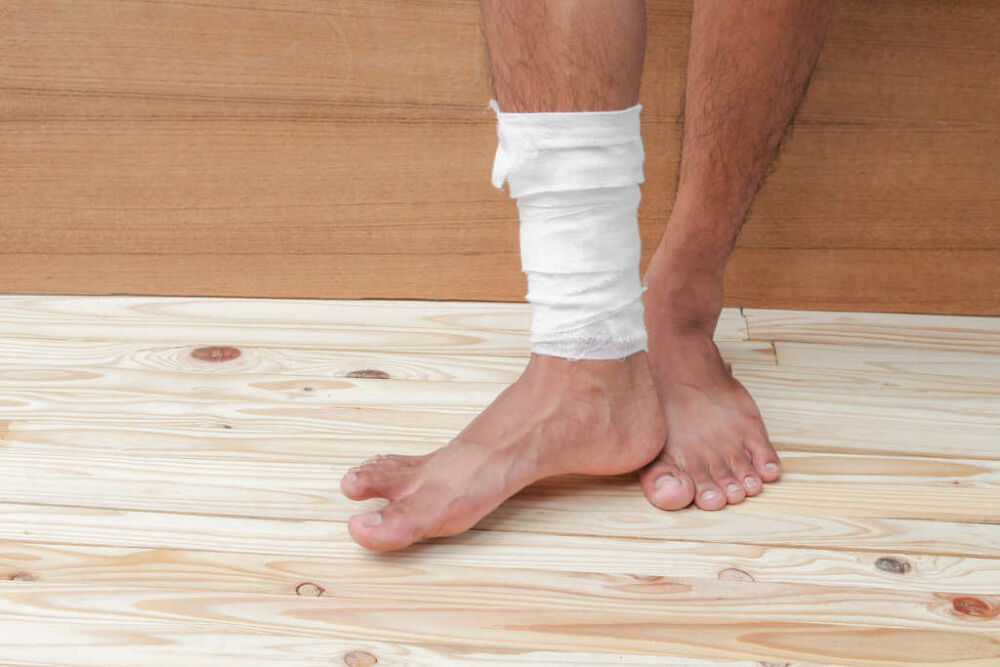
Caring for Venous Ulcer Wounds
Those suffering from varicose veins are at greater risk of a venous ulcer. At-home remedies can help heal the open

Ulcers on the legs can be painful and slow-healing. Finding proper treatment starts with determining if it’s a venous or arterial ulcer.
Ulcers on the legs are excruciating and can be difficult to cure. But how do you know if those open sores classify as venous or arterial ulcers?
Although both ulcer types produce swelling and pain, each stems from different causes and varying symptoms. Proper treatment starts with correctly diagnosing venous and arterial ulcers.
Around 100,000 miles of arteries and veins weave through your body. As arteries carry oxygen-rich blood from the heart to tissues and organs, veins return deoxygenated blood to the heart.
Obstructed blood flow in the veins or arteries prevents nutrient-rich oxygen from replenishing the skin. Without oxygen, the skin breaks open and forms an ulcer. However, venous and arterial ulcers develop as a result of different causes. Let’s look closer at each:
Venous Ulcers. Your veins depend on tiny valves to pump deoxygenated blood back to the heart. When those valves weaken and can no longer push blood upward, the blood becomes trapped in the vein, leading to fluid leaking and swelling around the sore. Venous ulcers are more common than arterial ulcers and typically result from high blood pressure in the vein, injury, or blood clots. If you have varicose veins, you're at a higher risk of developing an ulcer.
Besides swelling and pain, venous ulcer symptoms include inflamed or hardened skin, itching, flaky skin, discolored brown or black skin, and discharge. Venous ulcers form below the knee and along the inner area of the ankle.
Arterial Ulcers. Unlike venous ulcers, arterial ulcers typically develop on the outer side of the ankle, feet, heels, or toes. Peripheral artery disease (PAD), a buildup of fatty deposits, causes a blockage or narrowing of the arteries. An ulcer may develop on the skin as blood flow slows in the arteries. Diabetes, hypertension, high cholesterol, and smoking contribute to arterial ulcers.
Arterial ulcers are deep wounds with a red, yellow, or black color with edges that usually appear smooth. The ulcer is tender and cool to the touch due to the lack of circulation to the skin. Arterial ulcers tend not to bleed. When you elevate your leg, the skin on your leg with the sore turns pale.
Both venous and arterial ulcers can become infected, so your doctor may prescribe antibiotics. But while antibiotics may treat the infection, they will not cure the open wounds. Your doctor must determine the exact cause of the open wounds to treat them properly.
For venous ulcers, compression stockings that support blood flow in the calves can improve blood flow in the leg. Regularly cleaning and dressing the wound will also help prevent it from becoming infected.
If conservative methods fail to treat the venous ulcer, you can explore one of several minimally invasive treatments for vein disease. These procedures, which take an hour or less to complete, destroy the damaged veins so that blood can flow to nearby healthy veins, allowing the wound to improve.
Since arterial ulcers may result from medical conditions such as diabetes or PAD, treating these conditions first will help reduce the symptoms of the ulcers. As with venous ulcers, you’ll need to keep the wound dry, clean, and covered to prevent infection.
You may need angioplasty surgery to remove the fatty deposit in the artery. During this operation, your doctor will insert a balloon into the artery to clear the clog.
To minimize the symptoms of arterial ulcers, you can lower your blood pressure and cholesterol level. Maintaining a healthy weight, eating healthy, and regular exercise can alleviate the pain and other symptoms of venous ulcers. You should quit smoking immediately whether you have a venous or arterial ulcer.
Center for Vein Restoration (CVR) physicians are experts in treating all types of venous disease and symptoms, including venous ulcers. With our years of experience and expertise, we’ll diagnose and treat your sores with the latest vein therapies.
Contact a Patient Services Representative at 240-965-3915 if you have questions. You can also schedule a consultation with a vein physician near you online.